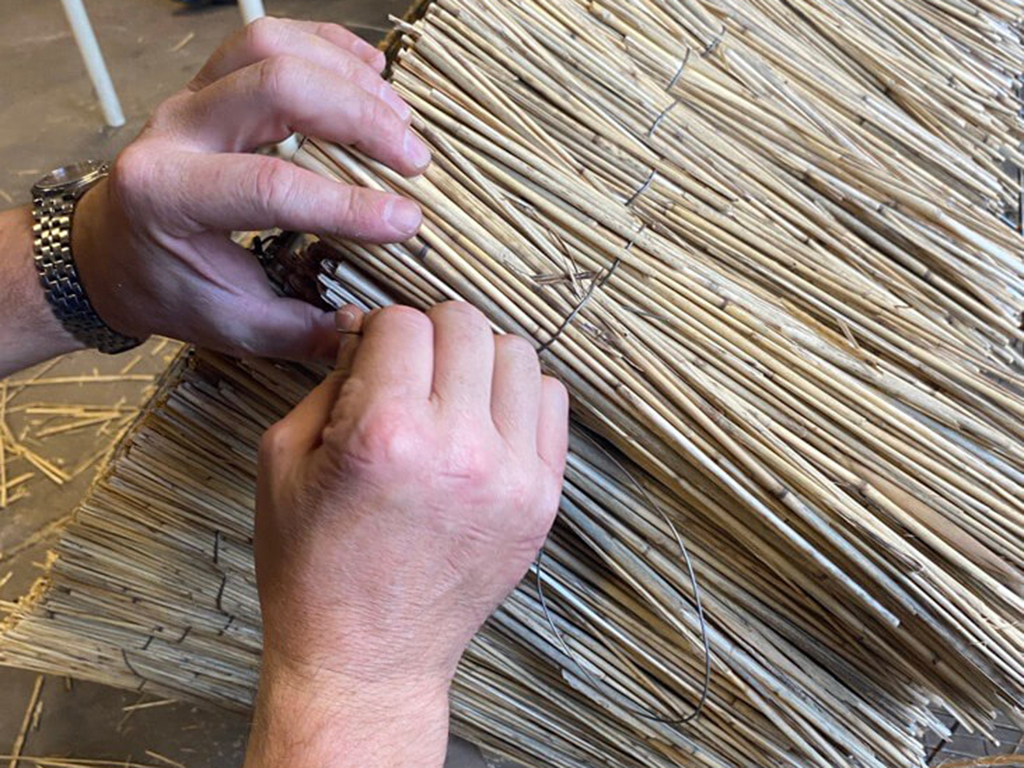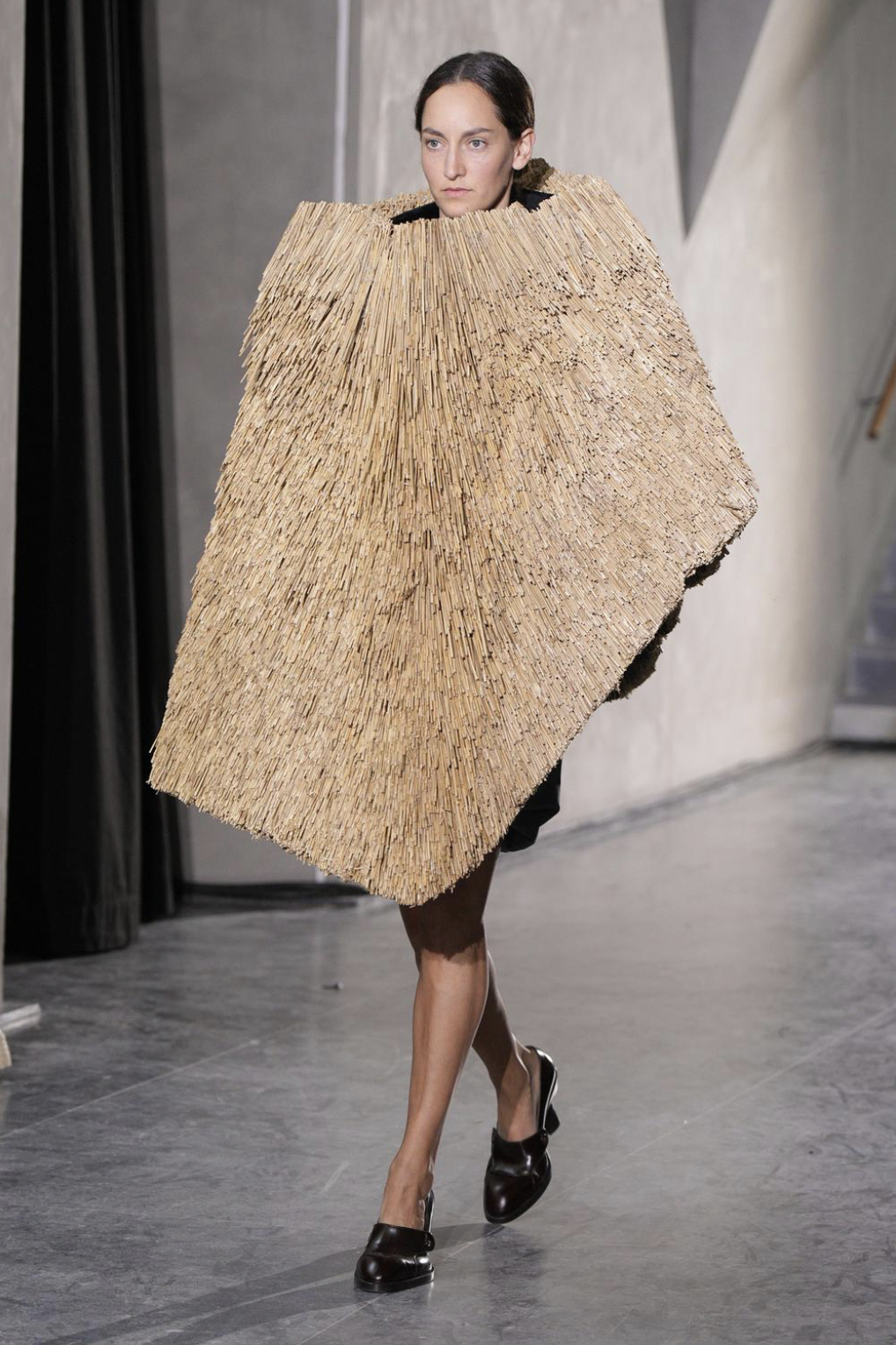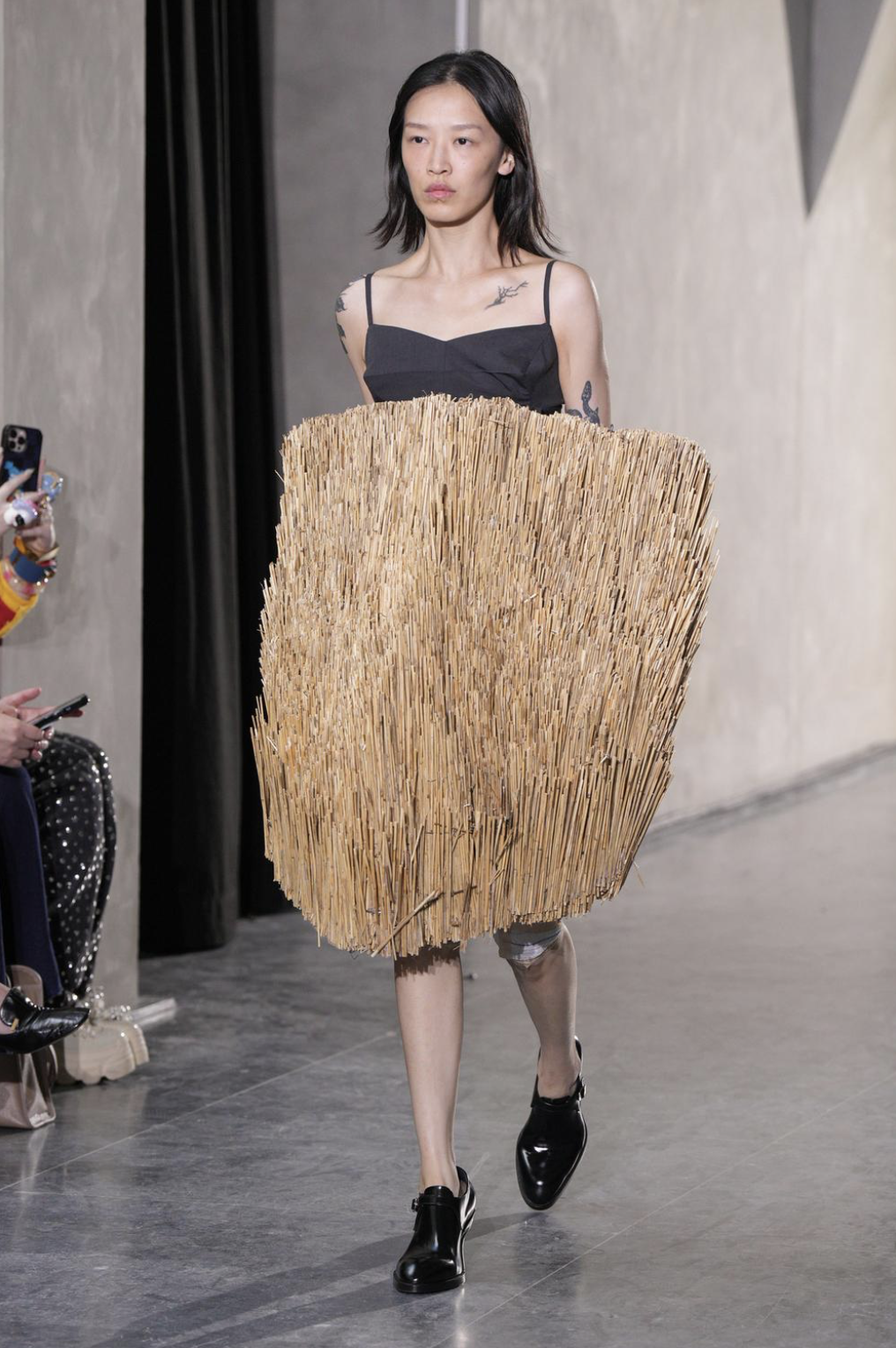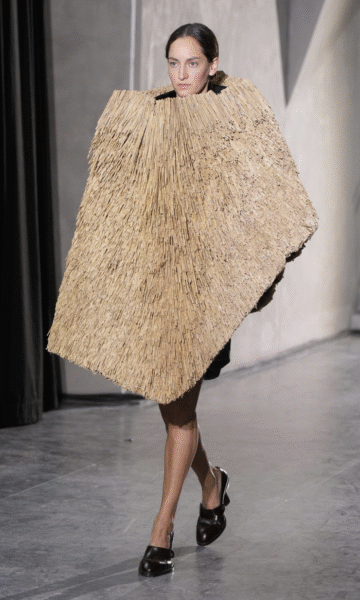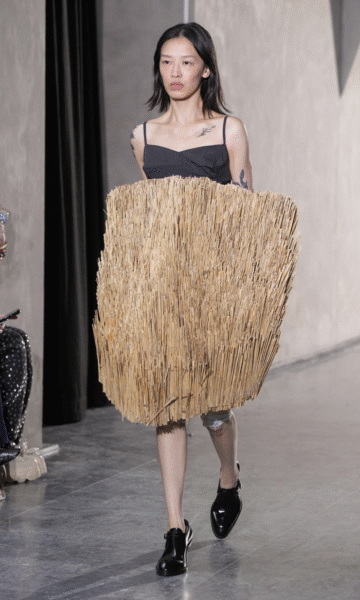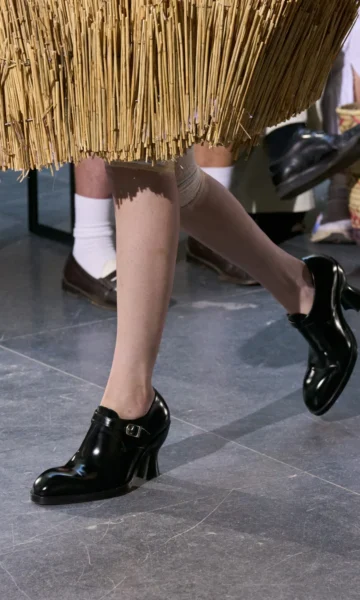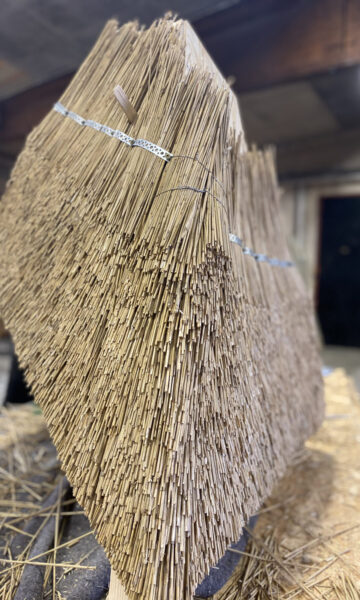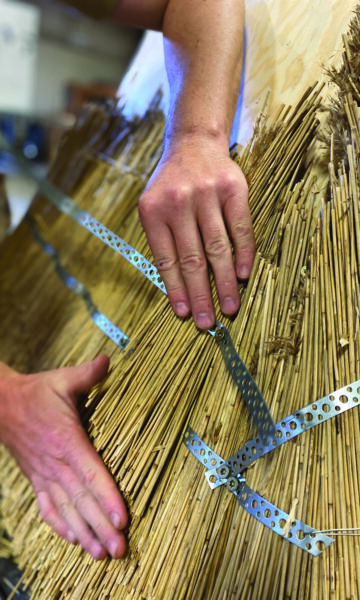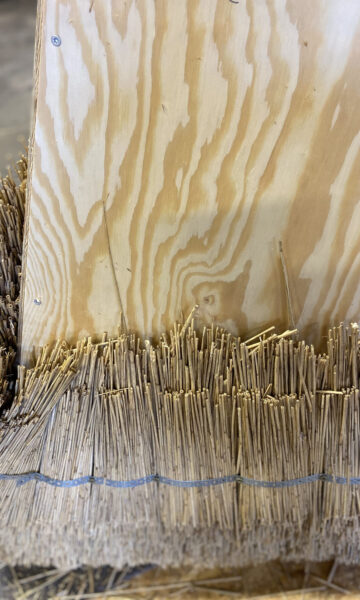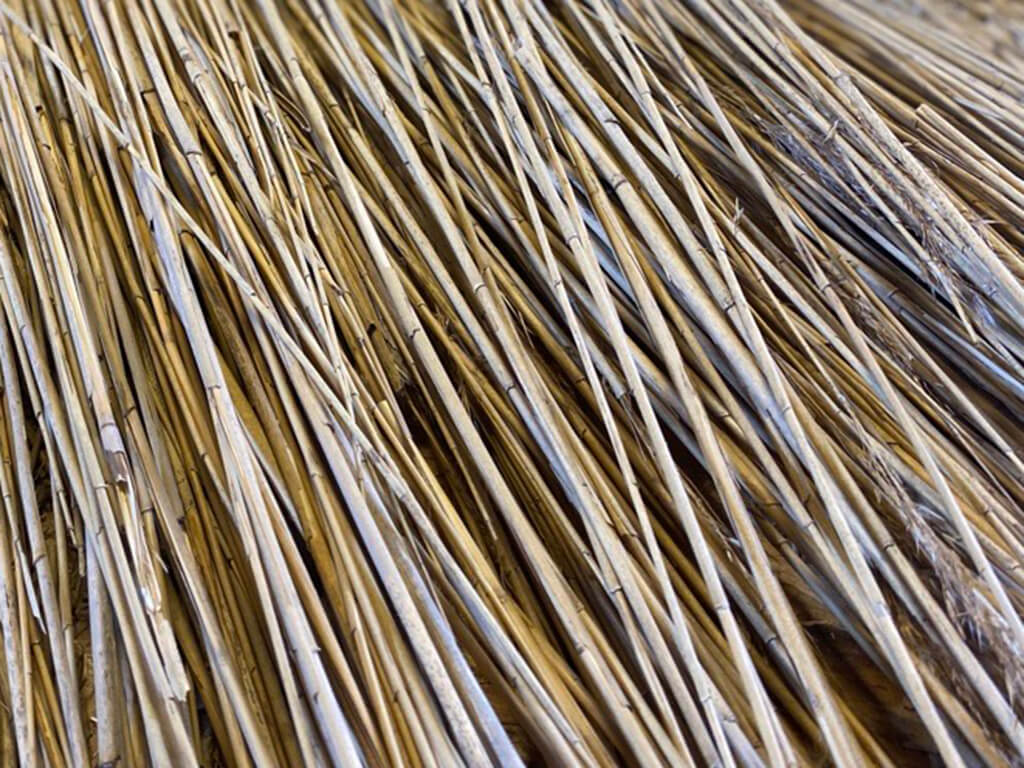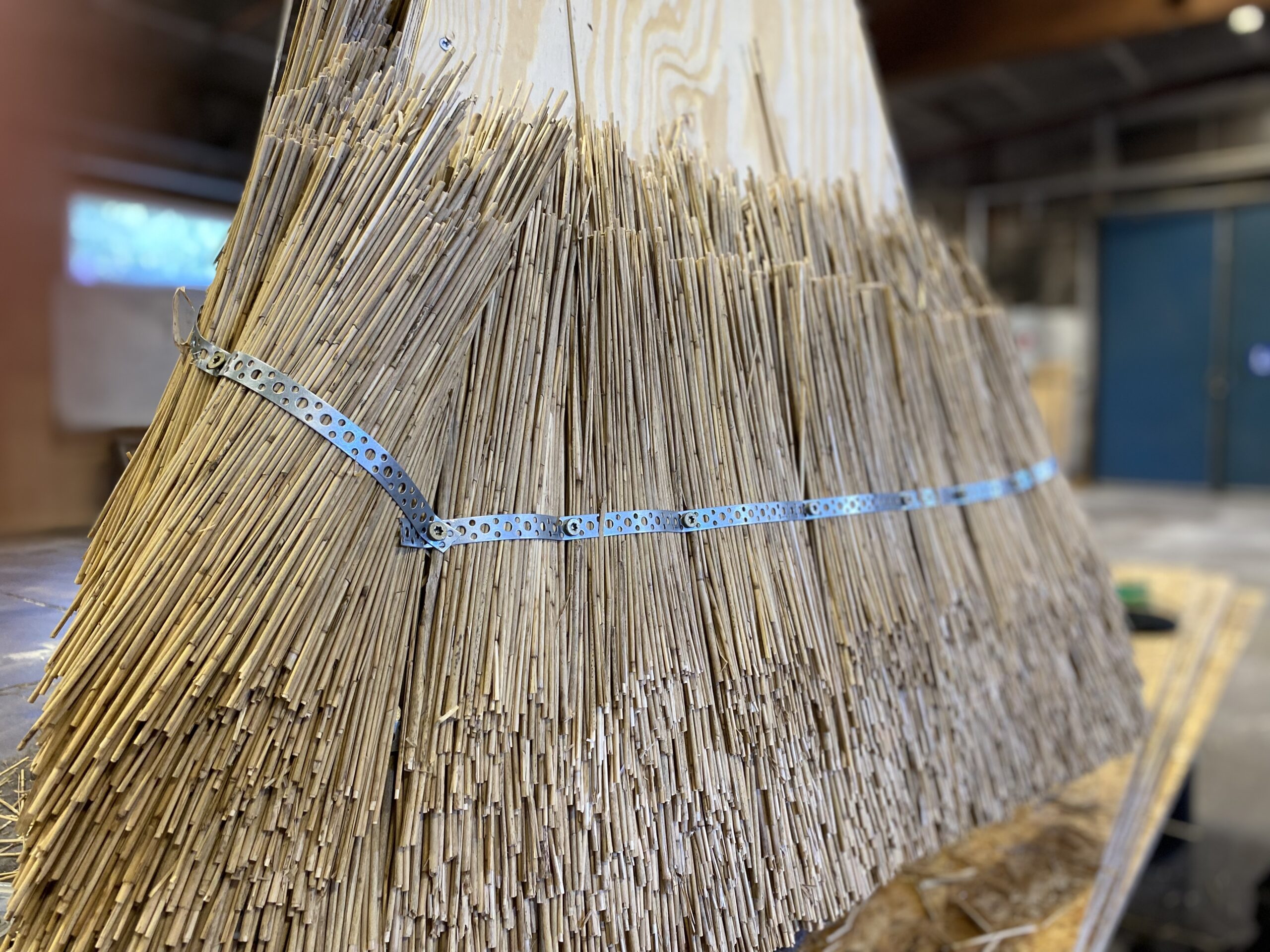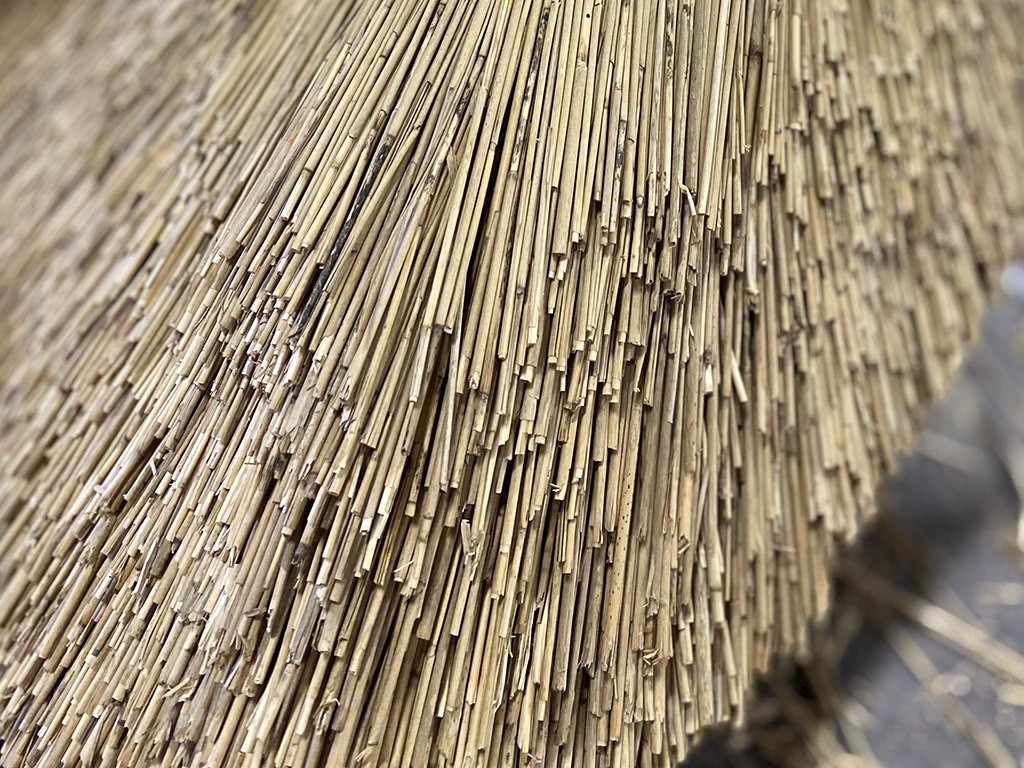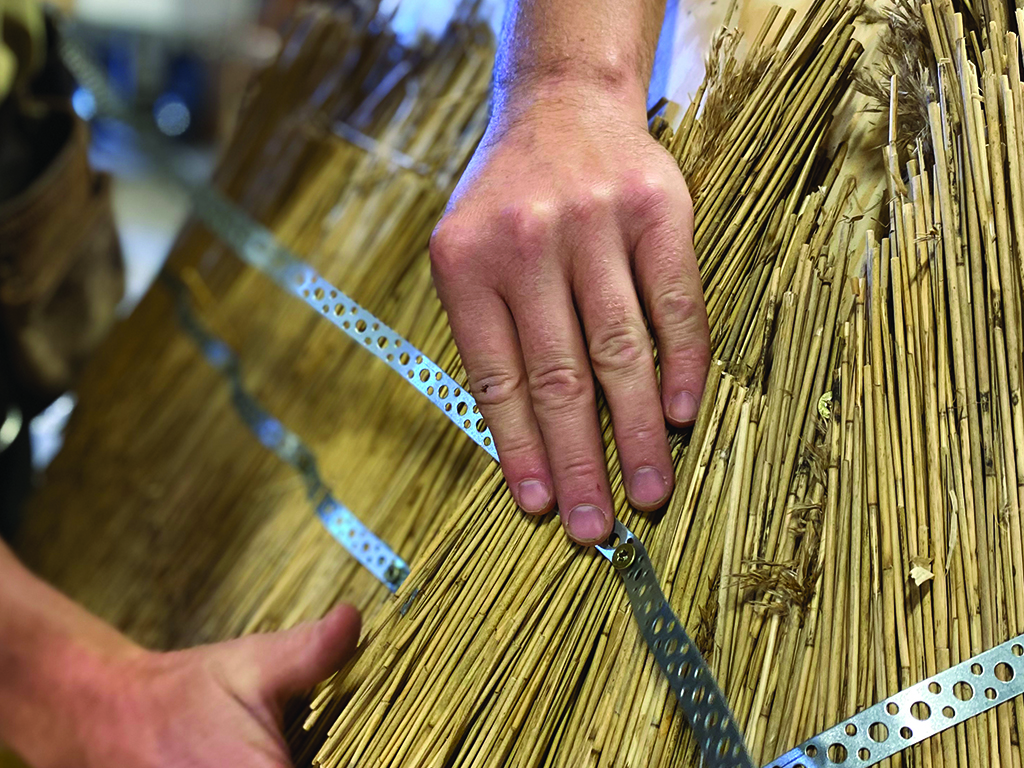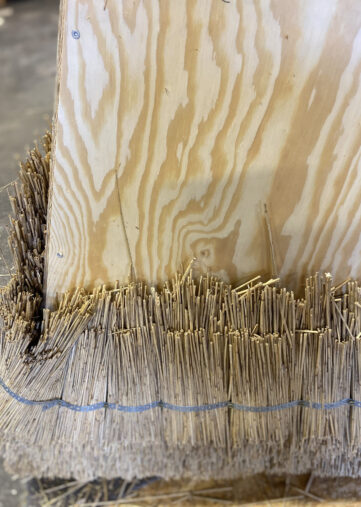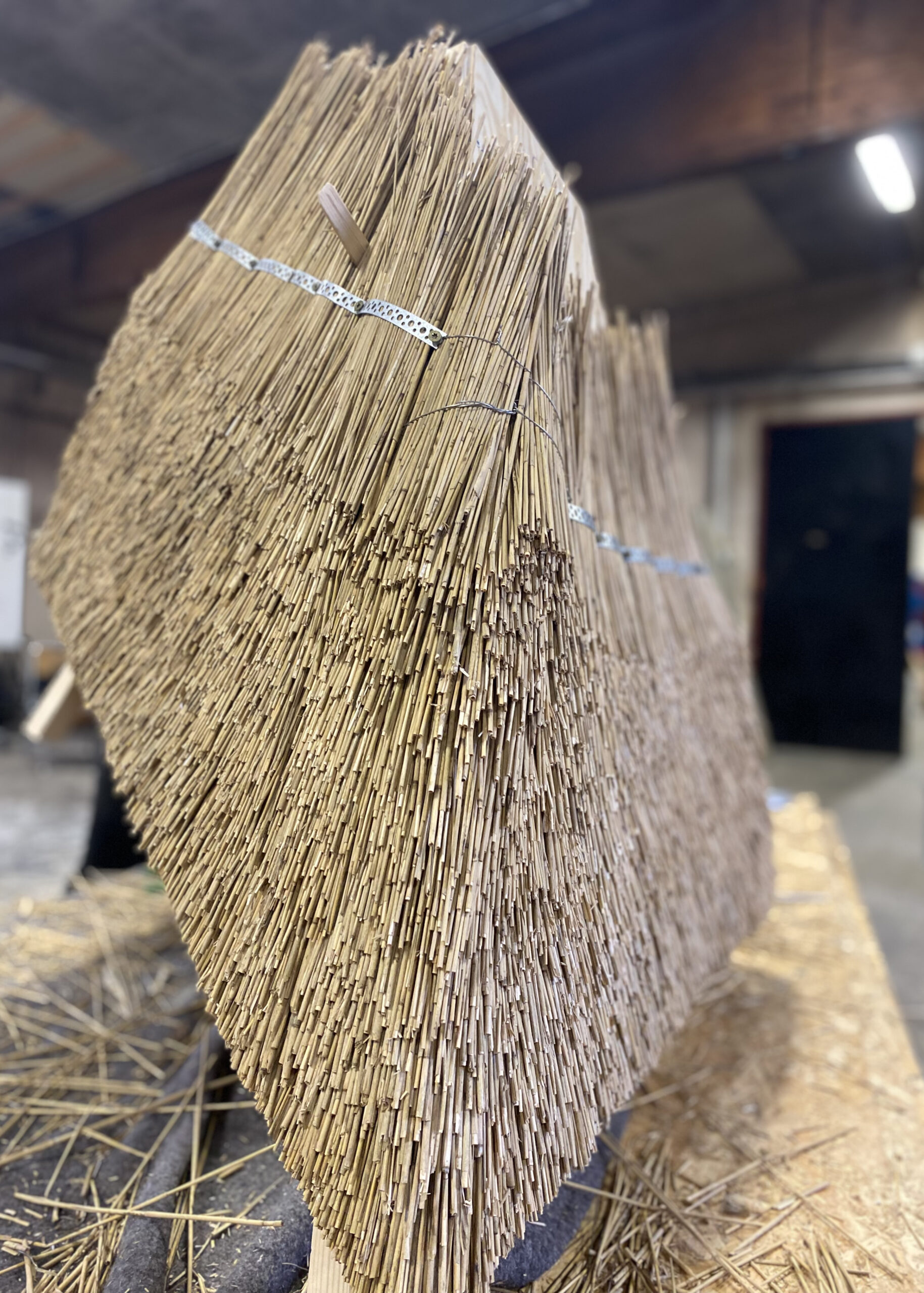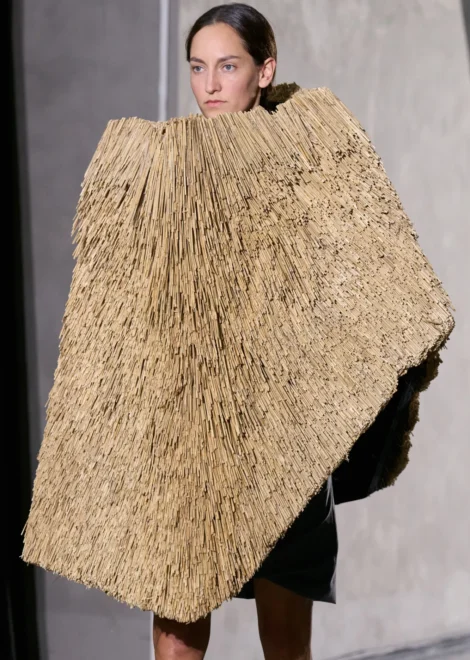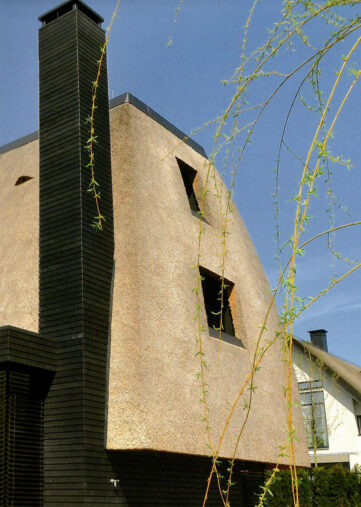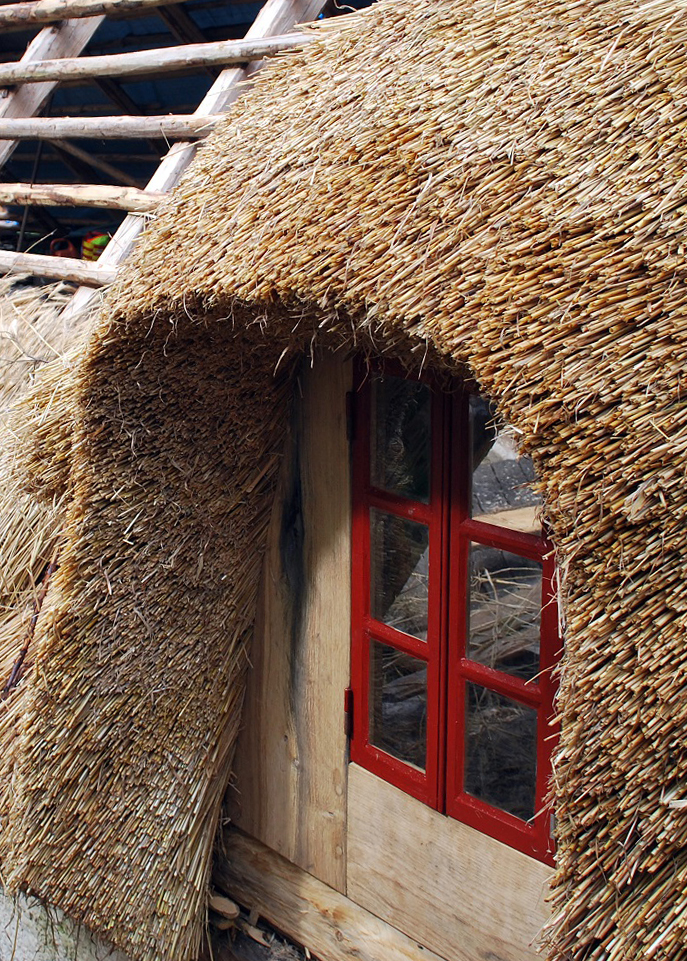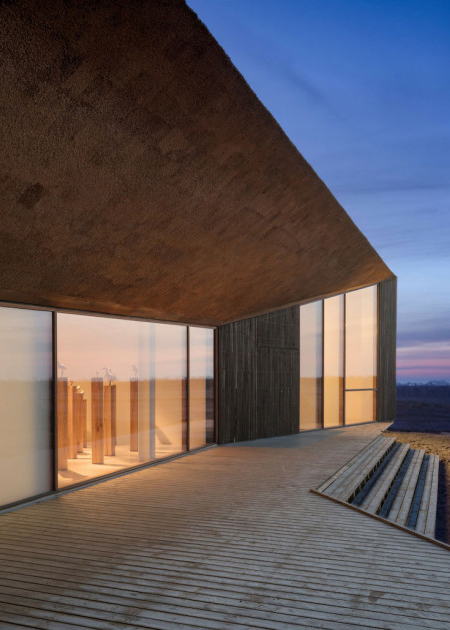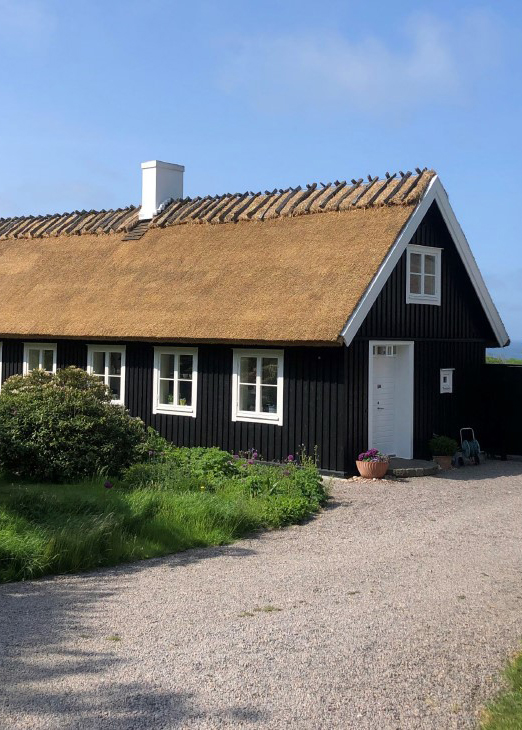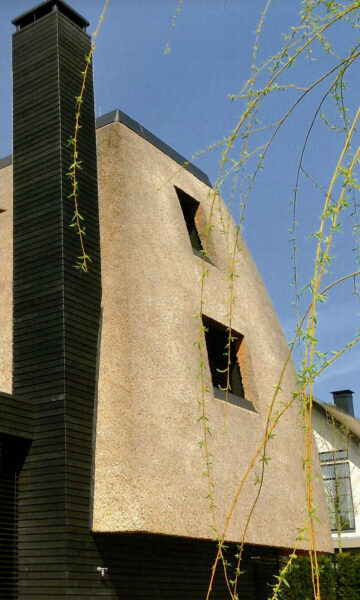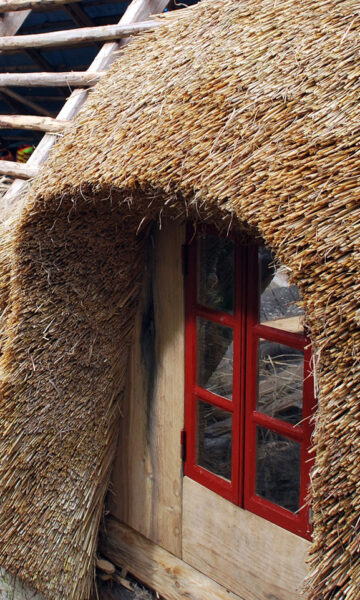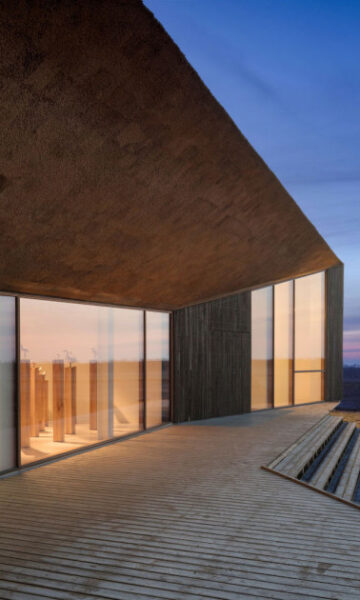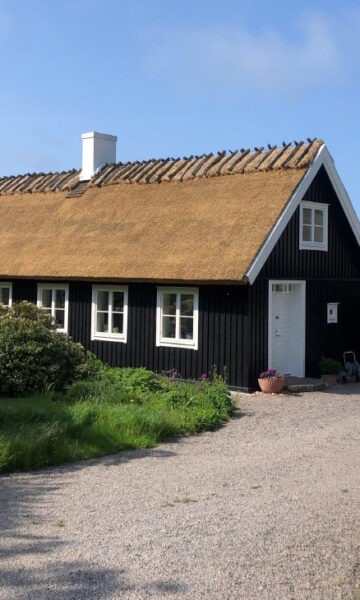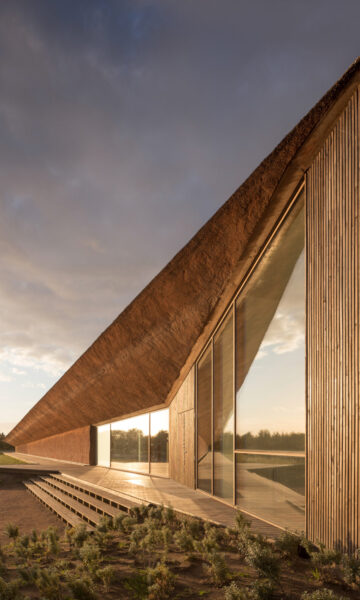In a unique collaboration with fashion designer Ellen Hodakova Larsson, Dacapo and its main teacher for thatching, Joar Nilsson, is exploring how thatching techniques can be transformed into wearable sculptures.
Larsson, known for her avant-garde use of repurposed materials through the work under her award-winning brand HODAKOVA, sees thatching as a tactile language of time and place. Dacapo being the first in Sweden to offer a formal two-year higher vocational program for thatchers. Together, Hodakova and Dacapo, are bridging architecture and couture, imagining garments that carry the texture and rhythm of vernacular building traditions.
Their shared vision became clear when both Ellen and Joar found inspiration in the same roof at Vadehavscentret in Denmark. Joar had just learned the technique during a visit weeks earlier, and that same method is now used in Hodakova’s sculptures, shown at Fashion Week in Paris 2025.
What is thatching?
Thatching is a roofing technique that uses dry vegetation, such as straw or water reed, to create durable, weather-resistant roofs. Practiced for millennia across the globe, it remains valued to this day for its sustainability, insulation properties, and beloved aesthetic.
The process is done entirely by hand. Skilled thatchers layer bundles of vegetation in overlapping rows, starting at the bottom edge of the roof and working upward. This structure allows rain and snow to run off efficiently while providing excellent thermal insulation.
There are several main techniques. In combed wheat reed, the straw is cleaned and laid in tight bundles for a smooth finish. Long straw uses unprocessed straw, giving a softer, more textured look. Water reed is the most durable material. Structurally, thatching is done either by stripping off the old thatch before applying new layers or by overlaying new thatch on top of the existing roof. Decorative styles, such as scalloped edges or patterned ridges, are sometimes used to add character.
”Architects are eager to be part of the green transition. They are curious, engaged, and open to exploring traditional techniques in new contexts and it’s not only architects — thatching has made its way to the runway.”
Reviving the art of
thatching in Sweden
Joar Nilsson is one of Sweden’s most dedicated advocates for traditional thatching and a key figure in its modern revival. With deep roots in the craft, passed down from his father, Sten Nilsson, Joar has spent years preserving and promoting this ancient roofing technique.
He has worked as a thatcher for over 20 years and says he often encounters skepticism when he explains what he does. People ask questions about durability, flammability, and whether thatched roofs are truly waterproof.
”It is interesting, because thatched roofs have kept homes dry for thousands of years. If there’s any technique that’s truly proven, it’s this one”, says Joar Nilsson.
Today, Joar leads Sweden’s first vocational training program for thatchers at Dacapo Mariestad, helping to meet the growing demand for skilled professionals in a field where tradition meets sustainability.
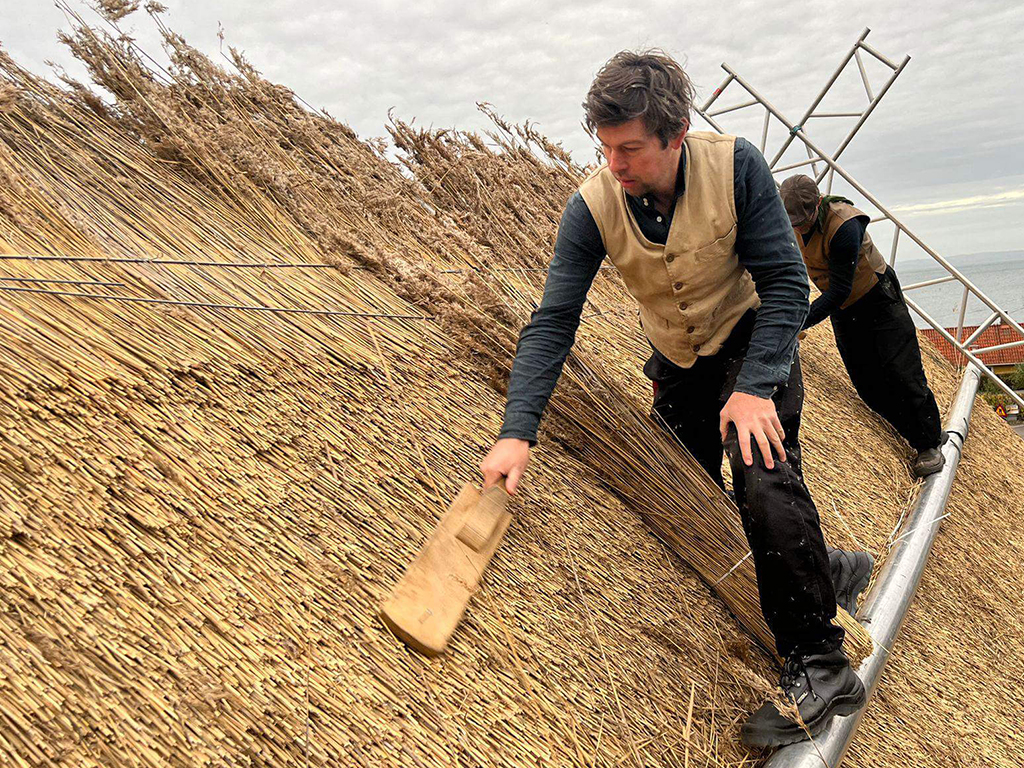
”I want to encourage people to go into traditional craft. It has been there through the years, connect to it and it may give you meaning.”
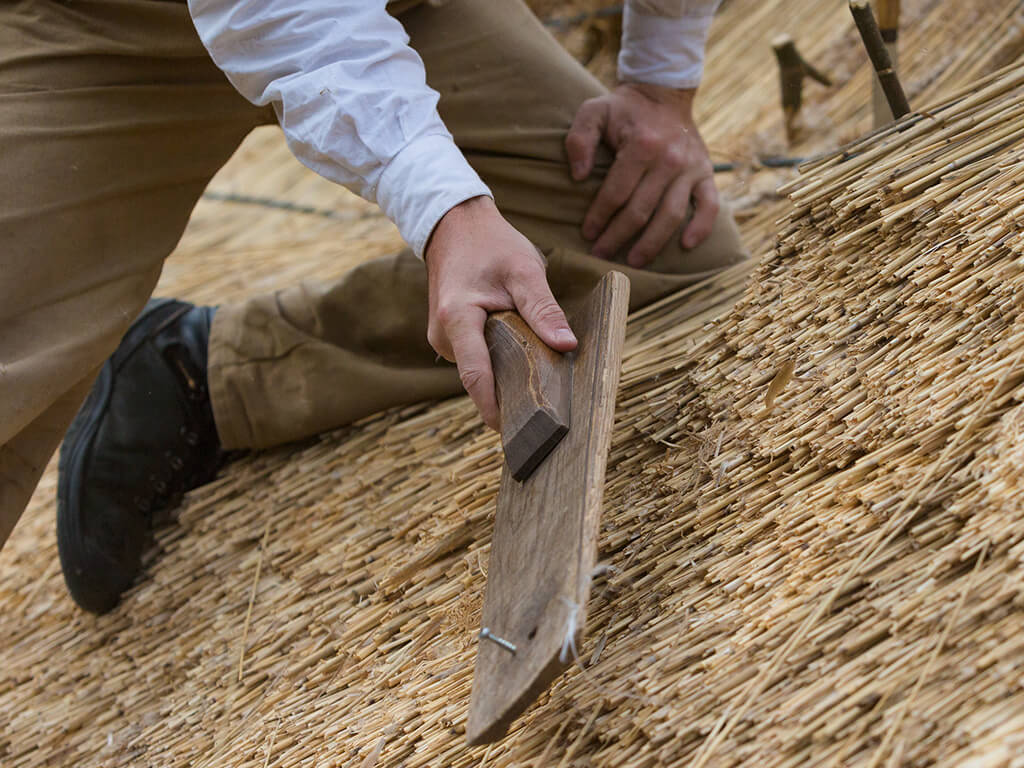
All Roads Lead to Paris
Joar’s commitment to craftsmanship runs in the family. His brother, Samuel Nilsson, is a skilled carpenter who was handpicked to help restore Notre-Dame Cathedral in Paris after the devastating fire in 2019. As the only Swedish artisan on the project, Samuel worked with timber using traditional hand tools, contributing to one of the most iconic restoration efforts in Europe. His journey from the forests of Hjörnered to the heart of Paris is a testament to the global relevance of Nordic building heritage, and a reminder that, in this family, all roads truly lead to Paris.
The Nilsson brothers have their father Sten Nilsson to thank for their skills, but more important, for the meaning and joy in the work. To meet basic needs with sustainable, down-to-earth beautiful technics.
Dacapo – we revitalize the craft
Dacapo Mariestad is more than education – it’s a place where the future is shaped by your own hands. At Dacapo Mariestad we offer higher education that blends tradition, innovation and sustainability. In collaboration with the Swedish Thatching Association, we are the first in Sweden to offer a formal two-year higher vocational program for thatchers. Applications open in spring 2026.
Campus Mariestad offers a unique learning environment for those who wish to study subjects related to culture, nature, and craftsmanship, as well as professions that are in high demand in the future. Our campus is in a beautiful setting within a culturally historic building with a hundred-year legacy, right in the lakeside town of Mariestad.
The educational programs offered here vary in focus, structure, and providers, but they share a strong common foundation: tradition, innovation, and sustainable societal development. So, whether you’re interested in a vocational college program (YH), university studies, or individual courses, you have come to the right place.
At Campus Mariestad, you’ll find Dacapo’s vocational programs in culture, nature, and craftsmanship, as well as YH programs such as dental nurse and production technician. Campus Mariestad also hosts the Department of Conservation from the University of Gothenburg. Additionally, you can pursue teacher education programs through Linköping University and Karlstad University at Campus Mariestad.
